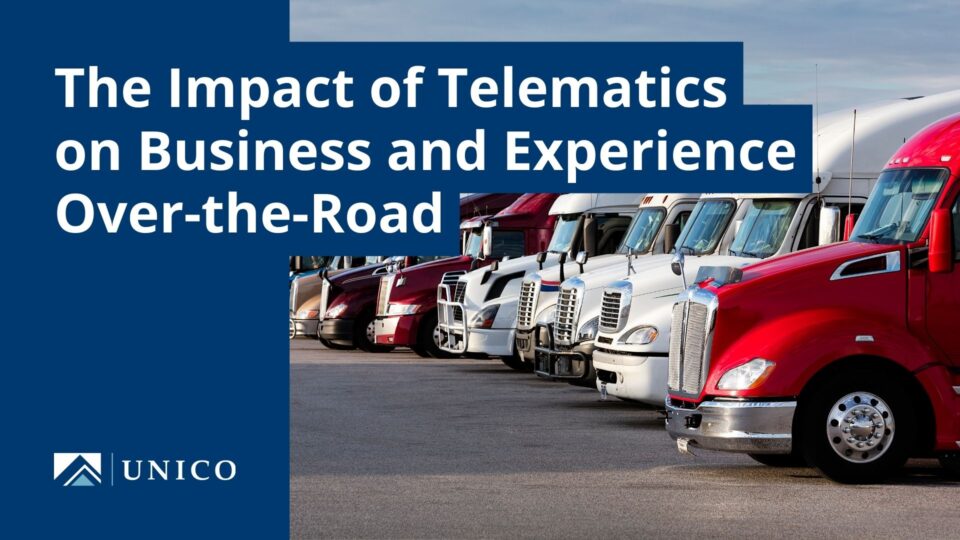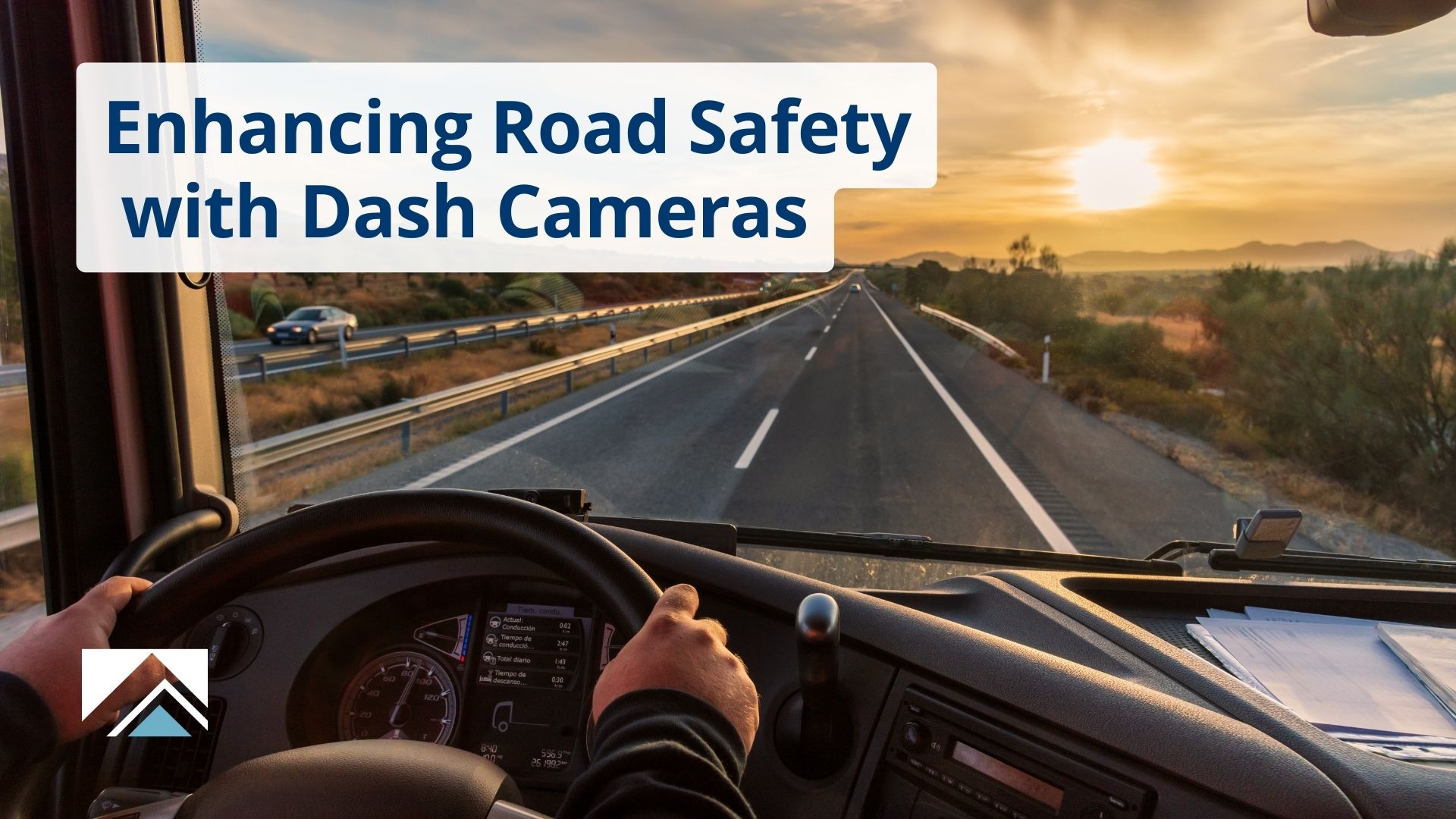Managing a fleet and drivers can be a challenge, particularly given the potential for accidents, employee injuries, liability concerns and increased costs associated with vehicle upkeep. To help accomplish this, many businesses have started to equip vehicles with devices known as telematics. These devices can help reduce numerous fleet risks, improve efficiency and promote safe driving behaviors.

The Basics of Telematics
Telematics is a form of vehicle software that combines the features of telecommunications and informatics to help employers effectively manage and monitor their fleet. This software operates by connecting to telematics devices installed in a vehicle, including GPS technology, sensors, mobile applications, dashcams and vehicle engine diagnostics solutions. Common data collected by vehicle telematics software includes:
- Vehicle speeds
- Vehicle locations
- Diagnostics data related to fuel efficiency and vehicle performance
- Driving behaviors (e.g., braking intensity or acceleration frequency)
- Vehicle weights
- Movement patterns of a vehicle
- Distracted driving incidents (e.g., smartphone usage)
Telematics can be used in a variety of different commercial vehicles, including cars, cargo vans, tractor-trailers, buses and heavy equipment. Many employers use this technology to monitor vehicle deliveries, determine routes, communicate with drivers, review employee driving practices and detect vehicle maintenance concerns.
Cost-to-Benefit Ratio
Overdrive surveyed 397 drivers ranging from owner-operators, leased small fleet to company drivers about their use of technology capable of being used for location or driver monitoring. The survey asked driver’s opinions on the costs and benefits of using telematics in their operations.
Total Cost-to-Benefit ratio was weighted from 0 (more costs) to 2 (more benefits). Respondents were asked to rank costs and benefits of the following technologies on a scale of 1 to 10.
Ranked Costs and Benefits
Top Ranked Technologies (1-10)
- Cost
- Benefit
Most Beneficial Technology
Cost-to-Benefit Ratio (0-2)
Road-facing Rear Camera: 1.4
Smart Phone: 1.35
Basic Cell Phone: 1.3
Purpose Built GPS Unit: 1.23
Technology Cost-to-Benefit Ratio Summary
Smartphones were recognized as the most beneficial technology, however, smartphone shad a higher cost ranking, leading to a lower overall score than road-facing rear cameras.
Road-facing rear cameras along with in-cab facing video rated highly due to its immense help after a crash. Other benefits drivers listed were family peace of mind from GPS services and simplicity of logging hours through use of Electronic Logging Devices’ location function or audio-recording features.
Smartphones and ELDs ranked as most costly due to a loss in privacy specially from video, cookies and GPS tracking. Increased stress was also reported from the increasing presence of service rule’s ticking clocks with ELDs. Price of implementing new technology ranked fourth in costs according to survey results.
In-cab Telematics and trailer-installed gps/telematics did not rank well according to drivers.




